Mission Profile Evaluation for Automotive Applications An Anthology of Best Practices
- Posted by Semyra Vasquez-Borucki
- On December 3, 2019
- 0
- Infineon at a Glance
- AEC Q100 Rev. H
- Mission Profile Definition
- Automotive Applications Requirements
- Reliability Basics
- Acceleration Models
- Examples of Mission Profile Evaluation
- Summary and Perspective
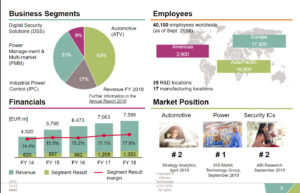
Some applications need a high level of reliability!

Infineon (former Siemens Semiconductor) is an expert in handling special requirements and has an excellent reputation in the space community for over 40 years!
-
- Infineon world wide customers value the high quality of the devices and appreciate the expertise in development and production.
- The space heritage covers more than 1500 Satellites/Missions. Lifetime up to 15 years without any failure
- There are already more than 200 000 Infineon HiRel components in Space.
- The product range covers Radiation Hard PowerMOS Transistor MW-Transistors, Diodes and PIN–Diodes
- Link to webpage: www.infineon.com/space
-
- Failure Mechanism Based Stress Test Qualification for Integrated Circuits
- Connect operating mission profile to a temperature grade
- Introduce section “Method to Assess a Mission Profile”
- Demanding loading profile
- Extended service lifetime requirement
- More stringent failure rate target over lifetime
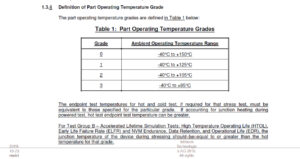
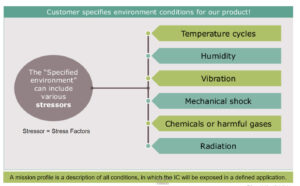

Please note:
- These requirements apply to the (passenger) vehicle in a more or less private use
- Subsystems and ECUs within the vehicle already today face different lifetime requirements.
- A different user profile may result in totally different lifetime requirements. Commonly, sources for that kind of requirements are commercial vehicles and trucks.
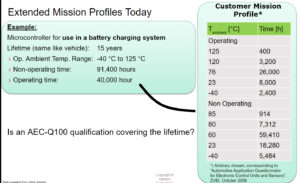
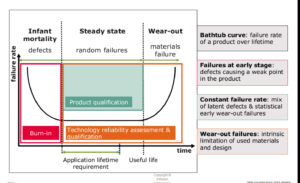
- A first glimpse at lifetime models
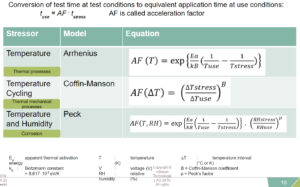
Arrhenius Model
- Assumption
- An IC-device shall run 8000h operation hours in 15 years in a given mission profile
- Problem Statement
- The IC device shows an increase of the Tj of 15°C at Vmax.
What is the minimum equivalent stress time when running HTSL and HTOL stress tests at Tamb = 150°C (oven temperature) in order to cover the given mission profile?

-
- Ea = 0.7eV (typical gate oxide failure mechanism); Ea = 1.0 eV (package effects)
- Consider passive time up to 15 years at an average temperature, e.g. 13°C
Arrhenius Model
HTOL
-
- Ea = 0.7eV (typical)
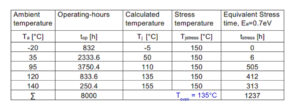
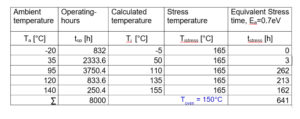
Sensibility Analysis

-
- Most of known failure mechanisms
- Robustness margin
- Coffin Manson
- Mission profile arbitrary chosen, corresponding to “Automotive Application Questionnaire for Electronic Control Units and Sensors”, ZVEI, October 2006
- TC test runs within -55°C and 150°C
- ΔTj in operation is 15°C
- 11000 cycles (number of engine on/off cycles over 15 years of use, 2 cold starts per day

- Peck

- Acceleration models well known over 30 years
- Challenges for applying acceleration models to new technologies
- Cu wires (AEC 006)
- Accurate computational methods, e.g. cohesive finite element simulations
Increasing reliability knowledge is striving for quality!
Thank you!
Latest posts by Semyra Vasquez-Borucki (see all)

0 comments on Mission Profile Evaluation for Automotive Applications An Anthology of Best Practices